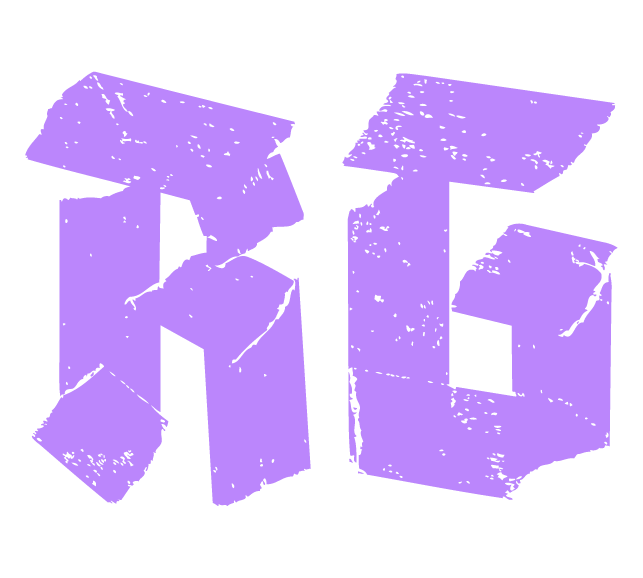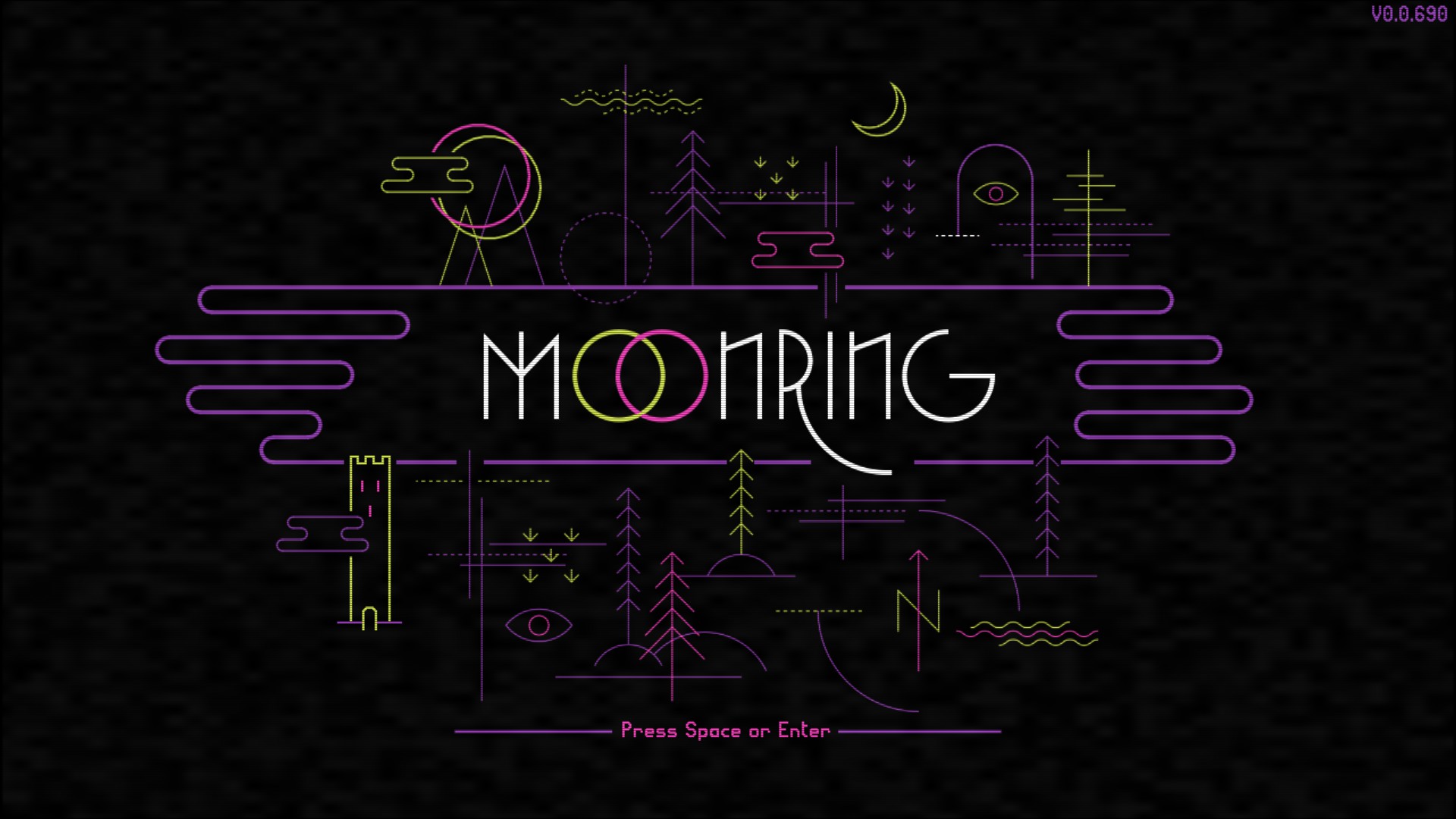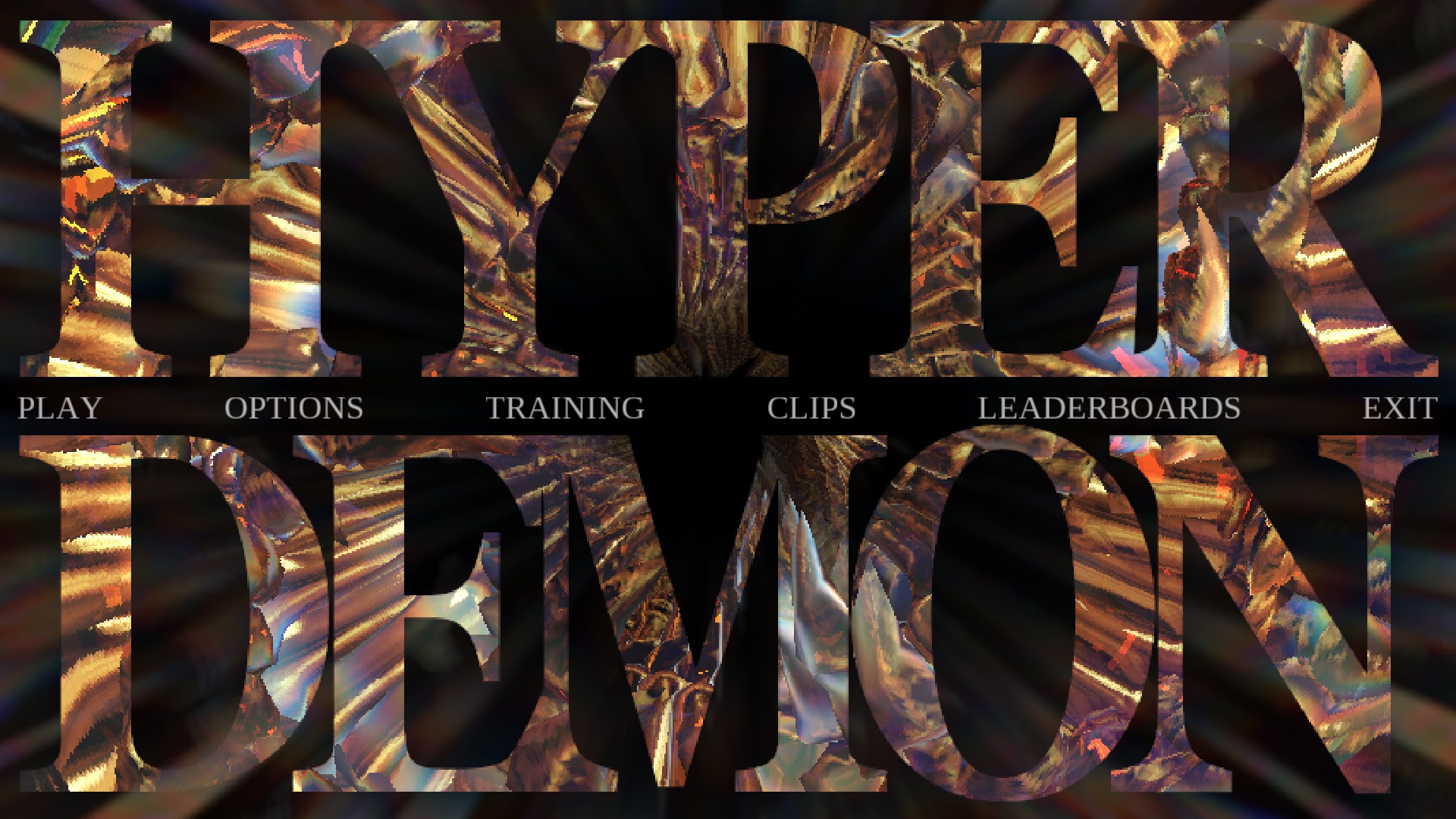A running joke among my friend group is that, despite having the hardware to run modern AAA games, I opt to play games that look like they can on systems from ten – or more – years ago. Now don’t get me wrong, beautiful graphics and art direction can make a game more enjoyable, and there are lots of gamers who uphold this as a standard for their taste in video games; however, my preference focuses on mechanics and gameplay. Ultimately, regardless of how a game looks, as long as it’s fun I can find myself sinking countless hours into it.
To my surprise, while I was scrolling through Steam’s new releases, a free to play game had just come out. Moonring is a top-down, classic roguelike RPG paying homage to classic dungeon crawling RPGs of the early 90s – specifically, I’ve seen players make the comparison between this game and Ultima. I was immediately captivated by the bare-bones minimalism in its UI design, sprites, and unique use of color. Prior to downloading the game, I started looking into its creation, as it’s rare to see a full release on Steam for free that isn’t a demo and has no microtransactions. Surprised again, I learned Moonstone is a passion project from one of Fable’s original creators, Dene Carter (Fluttermind), which took around four years to create (according to a recent Reddit AMA). Furthermore, according to his first Steam update titled “A Thankpology”, the developer “wasn’t expecting more than – maybe – a hundred or so downloads of Moonring”
Being a long-time fan of roguelike games, I was eager to download Moonring and see what all the hype was about – the game has 98% positive reviews after all.
The game begins with players being asked to name their character. After doing so, you awake in a small town called Yarrow, and are given a simple tutorial that goes over movement. Players can navigate the world using the arrow-keys or WASD. Furthermore, the concept of “bumping” is explained, bumping being the mechanic where you can have the player walk/bump into objects to interact with them – for example, bumping into a door will open it, bumping into a chest will withdraw its contents and add them to your inventory.
Taking a step back from gameplay, I’d like to comment on the visuals and the UI. The screen is composed of the information menu, open at all times and taking up a third of your screen on the left; along with the game world taking up the other two/thirds of your screen – this is where you see the player and the world around them. The menu consists of status bars relating to the players health, “shield” which I’ll discuss further into this post and a bar which appears to be energy. There is also a set of five icons which we don’t have any context regarding yet. Below is a status section, which will display player-affects such as being stunned, blinded, aflame, etc. Below that is the action log which details what occurs around you such as combat information and details pertaining to your surroundings. Lastly below that is an action bar, which shows players available actions and their hotkeys.
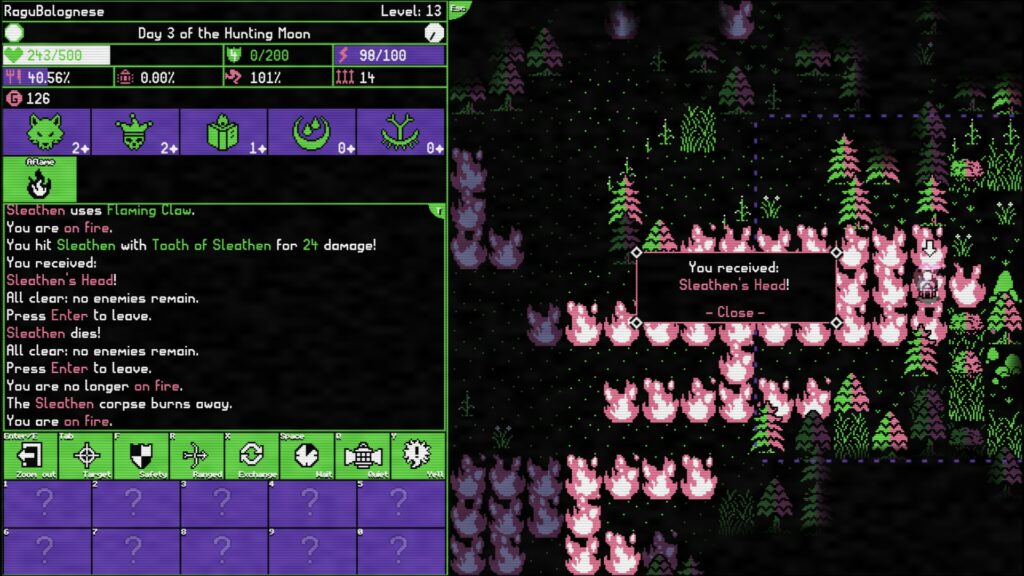
After opening the door to your bedroom, you enter what seems to be a living room and meet your first NPC. Frankly, this first NPC interaction already had me hooked.
Dialogue occurs with NPCs providing exposition about the world through textboxes, and players interact by typing in keywords as a response, if a typed response is relevant to the conversation, the NPC will address your answer and provide more information. While the NPCs speak, certain words are bolded, which hints at keywords you can type to continue the conversation.
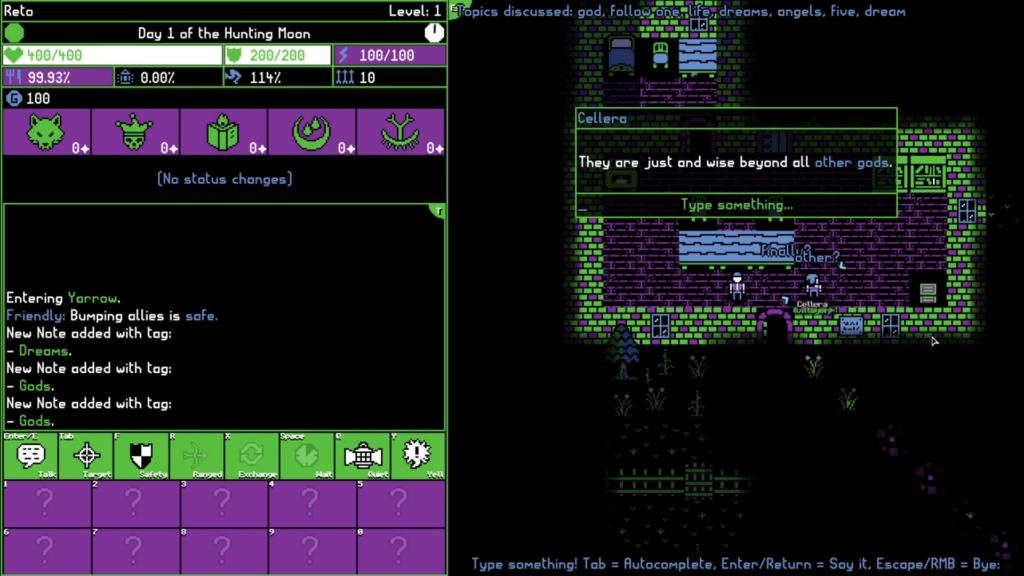
This character informs you that you are known as a “dreamless”, an individual who does not dream and does not hold any devotion to one of the five gods in this realm. Additionally, you learn that one important aspect of the dreamless is that only they hold the capacity to ascend and become an “Archon” – a ruler of the land. Furthermore, it’s hinted that your late father was a mysterious, yet well respected man. Any relevant or important information is logged into your journal, which can be accessed at any time to review. Nonetheless, while characters provide details regarding the world around you, nothing is explicitly stated. There are no concrete goals, no quests, no waypoints with paths leading you to the next area – you are given just enough information to decide your next moves.
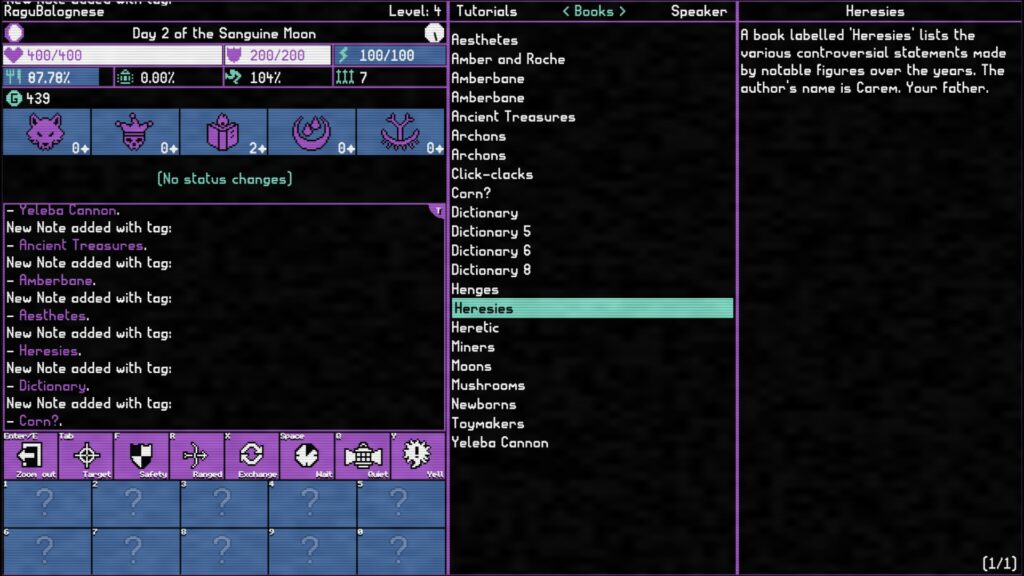
Out of the first conversation, I was able to piece together two possible goals. Firstly, to the south-east of Yarrow, players can go to the capital city known as Moon-upon-Thos. Secondly, there was a hint about a note left by your father stating there is a false-wall hidden in the shed containing a chest – furthermore, the key to the chest is in a container nearby.
I decided to focus on the shed as it was directly nearby. Exploring around the town I came across a few farm enclosures, some containing crops, others containing animals. There was a cemetery in the north end of the town, with gravestones that can be read, and a locked gate leading further north. Lastly, there was what seemed to be a shed directly south of the starting home. Thinking back on the prior note, I bumped into some containers and located a key. Additionally, my first combat encounter began as there was a massive spider creeping in the corner.
Another on-screen tutorial began, detailing the combat mechanics of Moonstone. As with most classic roguelikes, combat is turn based where players can attack a nearby enemy by bumping into it. Once bumped, the player will do damage, then the opponent will strike back. An interesting mechanic with Moonstone, however, is the two combat meters – health and poise. Poise functions as a shield of sorts, where any damage taken will first wear down your pose meter. Once the poise meter reaches zero, subsequent damage will go towards your health. While you’re out of combat, each turn (movement) will slightly refill your poise meter. This creates an interesting combat system where players need to decide when to continue an engagement, and when they should run away to regain their poise – allowing players to risk an ongoing engagement while trading off their health.
Seemingly on the right path with the barn route, I pursued this further as it seemed like the game’s tutorial stage. After killing the spider and thinking back on the conversation which detailing the false wall, I attempted bumping into the wall behind where the spider spawned, and as expected, the wall disappeared revealing a hidden chest. The chest contained a key which was used to unlock the gate in the cemetery, this further leading into the first dungeon of the game.
At this point, the roguelike elements are explained. The game will auto-save upon entering a new area, be it a town or a dungeon. As such, dungeons are randomly generated, and while difficult they are also forgiving. Unlike most roguelikes that delete your save file upon death, Moonring will take you back to the start of the dungeon and randomize it’s layout.
Upon completing the dungeon, I was awarded an insignia that belonged to the player’s father – a seemingly useless item, however, I’m sure it holds significance later into the plot. From here, I decided to follow the first NPCs instructions and travel south-east to the capital city, Moon-upon-Thos.
Once again, the game expanded its mechanics with the overworld. Similar to how players can traverse local areas, they are able to freely travel in the overworld, however, each step consumes more food and passes more time than within a specific area. Furthermore, players can press enter at any time to enter the tile they’re standing on and find themselves in a detailed section of the map. Doing so allows you to begin combat encounters, gather herbs and hunt for food.
Ultimately, I had reached the capital and began conversing with the local priest – who instructs me to visit the chapels of each god. Furthermore, after telling the priest that you are dreamless, they explain you may become archon by retrieving each faiths specific relic. Only once you have obtained all five you are able to ascend and become Archon. This is where the real game begins.
Generally, I like to end these posts with some criticism, however, aside from the game containing some minor bugs and the occasional crash, I really don’t have much to critique. This game is truly a gem, reviving elements of classic roguelike RPGs and bringing them to the modern era of gaming.
To avoid any spoilers, I won’t go into detail about the various gods – or the various blessings they can bestow upon the player in exchange for your devotion. Nor will I detail the journeys each of its priests set you upon as they all have their own puzzles associated with them; however, I will end with some final praise of the games design. As mentioned earlier, the game will not hold you hand and will not explicitly tell you what to do from here. You as the player are free to purse the relics in any order, visit any of the central city related to the five relics and embark on any of the five central journeys in any order you desire. Moonring will take you on a unique journey that requires attention to detail, strategy, and experimentation to discover the solutions to its many well-designed puzzles. I highly urge you to download this gem and try it yourself. I guarantee you’ll get lost in the wonderfully crafted world of Caldera. With a price tag of $0.00, you have nothing to lose.
